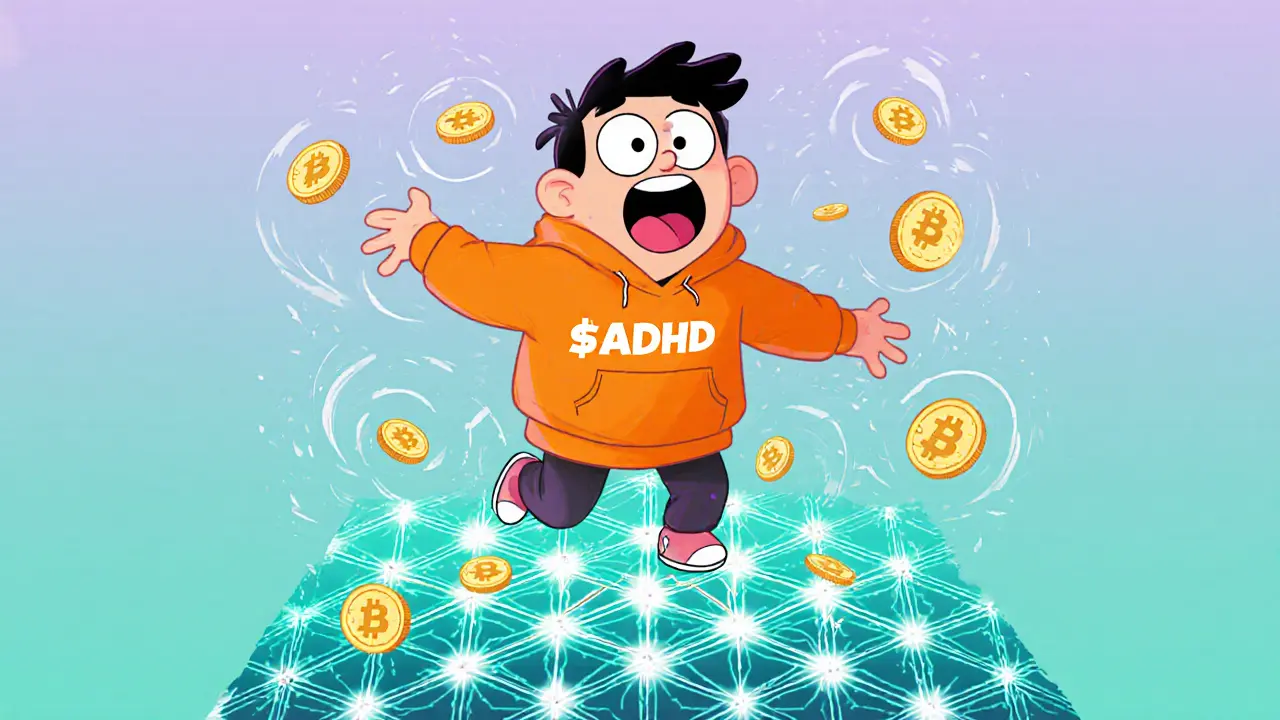ADHD Token: What It Is and Why It Matters
When you hear about ADHD token, a community‑driven cryptocurrency that blends meme culture with real‑world utility. Also known as ADHD, it aims to reward active participants while funding health‑focused projects. ADHD token isn’t just another meme coin; its design leans on a specific tokenomics, a set of rules that dictate supply, distribution, and incentives for holders. This tokenomics model includes a deflationary burn, a reflection fee that redistributes a slice of each trade, and a treasury allocation for community grants. In plain terms, every time someone buys or sells ADHD, a tiny part fuels the token’s growth and its charitable mission.
How Airdrops and Decentralized Exchanges Shape the ADHD Ecosystem
The next big piece of the puzzle is the airdrop, a free distribution of tokens to early supporters or eligible wallets. The ADHD team runs periodic airdrops to boost awareness and reward loyal users. To qualify, you usually need to hold a minimum amount of ADHD or complete simple tasks like following social channels. These drops create a network effect: more holders mean higher liquidity, which in turn makes the token more attractive on decentralized exchange, a blockchain‑based platform where users trade directly from their wallets without a central authority. On DEXs, ADHD trades peer‑to‑peer, bypassing traditional gatekeepers and keeping transaction costs low. This setup aligns with the token’s ethos of community ownership and transparency.
Regulation also plays a quiet but powerful role. Recent EU frameworks like MiCA set clear rules for crypto assets, demanding disclosure of tokenomics and anti‑money‑laundering measures. While ADHD isn’t classified as a security, complying with such standards builds trust and opens doors to larger markets. In practice, the token’s team publishes audited tokenomics reports and KYC‑friendly pathways for institutional interest. This compliance loop—regulation influencing token design, which then affects airdrop eligibility and DEX listings—creates a feedback cycle that can stabilize price swings and attract long‑term investors.
Putting all this together, you’ll find that ADHD token sits at the intersection of fun community incentives and serious financial mechanics. Its tokenomics drives reflection rewards, airdrops widen participation, DEXs ensure open trading, and smart regulatory alignment boosts credibility. Below you’ll discover articles that dive deeper into each of these areas: from step‑by‑step airdrop guides and tokenomics breakdowns to analysis of how MiCA might impact future growth. Whether you’re just curious about the token’s basics or looking to claim the next airdrop, the collection ahead offers practical insights you can act on right away.
